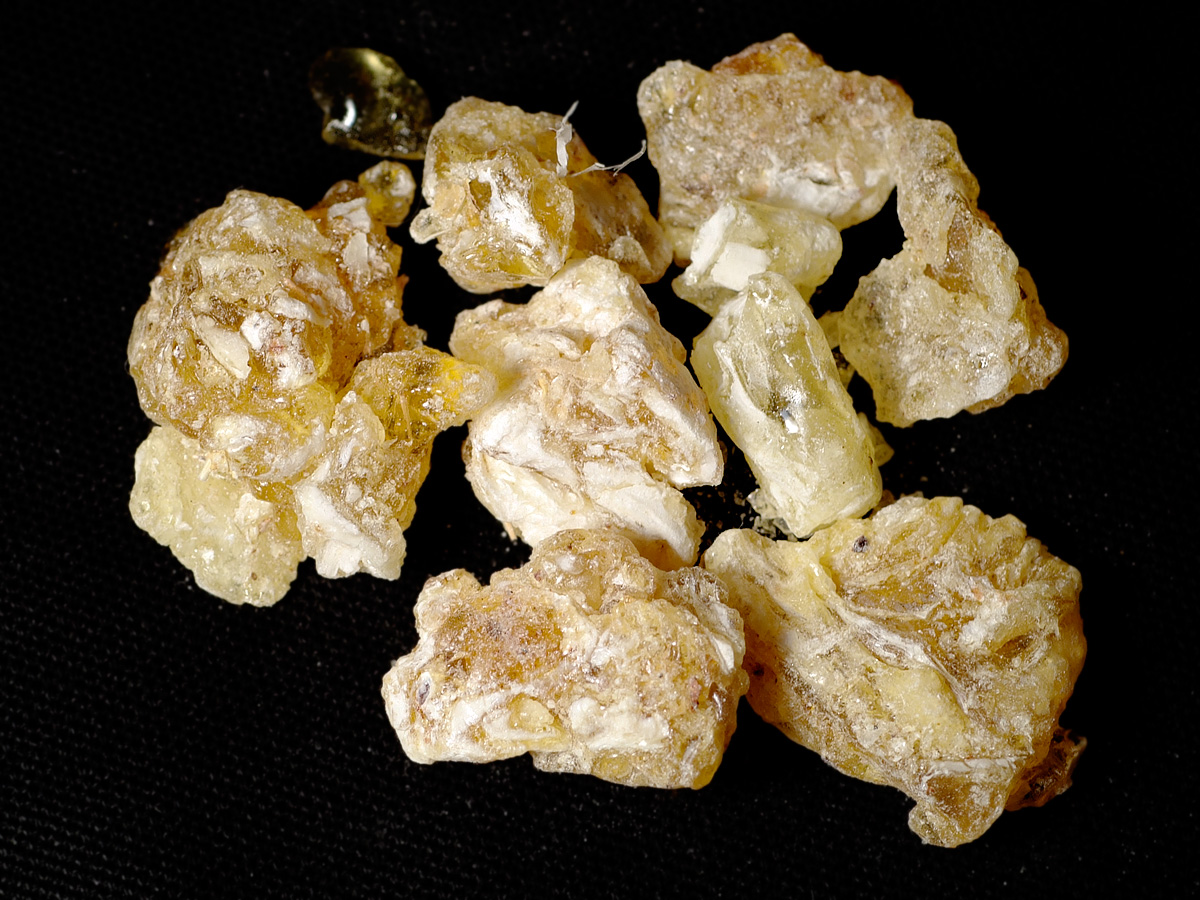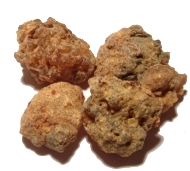|
Commiphora Caudata
''Commiphora caudata'', the hill mango or green commiphora, is the most abundant Asian species of ''Commiphora'' of flowering plants in the frankincense and myrrh family, Burseraceae. It can be found in Southern India and Sri Lanka, usually growing in the full sun on hilly granite rock outcrops in dry zone areas. It is a small to medium-sized deciduous tree which is said to be able to reach height of 10-20m, but usually is less high. The tree has a smooth, succulent green bark, which partly flakes off with age, giving rise to a characteristic patchwork of green and brown patches. Its sap has a strong resinous scent. The tree has medicinal properties. The fruit is a globose fleshy drupe with 2 to 6 valves and 1 seed that is black and has 4 wings. Remnants of branches can form a kind of thorns on the trunk. The flowers have a greenish to cream-yellow pedestal with pink to red petals.Ashton et al ''Field Guide to the Common Trees and Shrubs of Sri Lanka'' 1997: 123, 'Bihrmann's Caudi ... [...More Info...] [...Related Items...] OR: [Wikipedia] [Google] [Baidu] |
Commiphora
The genus of the myrrhs, ''Commiphora'', is the most species-rich genus of flowering plants in the frankincense and myrrh family, Burseraceae. The genus contains approximately 190 species of shrubs and trees, which are distributed throughout the (sub-) tropical regions of Africa, the western Indian Ocean islands, the Arabian Peninsula, India, and South America.Weeks, A. and Simpson, B.B. 2007. Molecular phylogenetic analysis of Commiphora (Burseraceae) yields insight on the evolution and historical biogeography of an “impossible” genus. Molecular Phylogenetics and Evolution. 42:62–79. The genus is drought-tolerant and common throughout the xerophytic scrub, seasonally dry tropical forests, and woodlands of these regions. The common name myrrh refers to several species of the genus, from which aromatic resins are derived for various fragrance and medicinal uses by humans. Description Leaves in ''Commiphora'' are pinnately compound (or very rarely unifoliolate). Many spe ... [...More Info...] [...Related Items...] OR: [Wikipedia] [Google] [Baidu] |
Flowering Plant
Flowering plants are plants that bear flowers and fruits, and form the clade Angiospermae (), commonly called angiosperms. The term "angiosperm" is derived from the Greek words ('container, vessel') and ('seed'), and refers to those plants that produce their seeds enclosed within a fruit. They are by far the most diverse group of land plants with 64 orders, 416 families, approximately 13,000 known genera and 300,000 known species. Angiosperms were formerly called Magnoliophyta (). Like gymnosperms, angiosperms are seed-producing plants. They are distinguished from gymnosperms by characteristics including flowers, endosperm within their seeds, and the production of fruits that contain the seeds. The ancestors of flowering plants diverged from the common ancestor of all living gymnosperms before the end of the Carboniferous, over 300 million years ago. The closest fossil relatives of flowering plants are uncertain and contentious. The earliest angiosperm fossils ar ... [...More Info...] [...Related Items...] OR: [Wikipedia] [Google] [Baidu] |
Frankincense
Frankincense (also known as olibanum) is an aromatic resin used in incense and perfumes, obtained from trees of the genus ''Boswellia'' in the family Burseraceae. The word is from Old French ('high-quality incense'). There are several species of ''Boswellia'' that produce true frankincense: ''Boswellia sacra'' ( syn. ''B. bhaw-dajiana'', syn. ''B. carteri''), '' B. frereana'', '' B. serrata'' (''B. thurifera'', Indian frankincense), and '' B. papyrifera''. Resin from each is available in various grades, which depend on the time of harvesting. The resin is hand-sorted for quality. Etymology and other names The English word ''frankincense'' derives from the Old French expression , meaning 'high-quality incense'. The word in Old French meant 'noble, pure'. Although named ''frank''incense, the name is not referring to the Franks. The name of frankincense in Koine Greek (the language of the New Testament): grc-koi, λίβανος, translit=líbanos, label=none (or grc-koi, λι� ... [...More Info...] [...Related Items...] OR: [Wikipedia] [Google] [Baidu] |
Myrrh
Myrrh (; from Semitic, but see '' § Etymology'') is a gum-resin extracted from a number of small, thorny tree species of the genus ''Commiphora''. Myrrh resin has been used throughout history as a perfume, incense and medicine. Myrrh mixed with posca or wine was common across ancient cultures, for general pleasure, and as an analgesic. Extraction and production When a wound on a tree penetrates through the bark and into the sapwood, the tree secretes a resin. Myrrh gum, like frankincense, is such a resin. Myrrh is harvested by repeatedly wounding the trees to bleed the gum, which is waxy and coagulates quickly. After the harvest, the gum becomes hard and glossy. The gum is yellowish and may be either clear or opaque. It darkens deeply as it ages, and white streaks emerge. Myrrh gum is commonly harvested from the species ''Commiphora myrrha''. Another commonly used name, ''Commiphora molmol'', is now considered a synonym of ''Commiphora myrrha''. ''Commiphora myrrha ... [...More Info...] [...Related Items...] OR: [Wikipedia] [Google] [Baidu] |
Burseraceae
The Burseraceae are a moderate-sized family of 17-19 genera and about 540 species of flowering plants. The actual numbers differ according to the time period in which a given source is written describing this family. The Burseraceae are also known as the torchwood family, the frankincense and myrrh family, or simply the incense tree family. The family includes both trees and shrubs, and is native to tropical regions of Africa, Asia. Australasia, and the Americas. Just as the family size (in terms of genera and species) differs according to the time period of the study, so, too, does its placement in the higher ranks. Nevertheless, the family is a genetically supported monophyletic group currently and frequently cited within the Sapindales and is recognized as a sister group to the Anacardiaceae. The Burseraceae are characterized by the nonallergenic resin they produce in virtually all plant tissue and the distinctive smooth, yet flaking, aromatic bark.Judd, W.S., Campbell, C.S., ... [...More Info...] [...Related Items...] OR: [Wikipedia] [Google] [Baidu] |
India
India, officially the Republic of India (Hindi: ), is a country in South Asia. It is the seventh-largest country by area, the second-most populous country, and the most populous democracy in the world. Bounded by the Indian Ocean on the south, the Arabian Sea on the southwest, and the Bay of Bengal on the southeast, it shares land borders with Pakistan to the west; China, Nepal, and Bhutan to the north; and Bangladesh and Myanmar to the east. In the Indian Ocean, India is in the vicinity of Sri Lanka and the Maldives; its Andaman and Nicobar Islands share a maritime border with Thailand, Myanmar, and Indonesia. Modern humans arrived on the Indian subcontinent from Africa no later than 55,000 years ago., "Y-Chromosome and Mt-DNA data support the colonization of South Asia by modern humans originating in Africa. ... Coalescence dates for most non-European populations average to between 73–55 ka.", "Modern human beings—''Homo sapiens''—originated in Africa. Then, int ... [...More Info...] [...Related Items...] OR: [Wikipedia] [Google] [Baidu] |
Sri Lanka
Sri Lanka (, ; si, ශ්රී ලංකා, Śrī Laṅkā, translit-std=ISO (); ta, இலங்கை, Ilaṅkai, translit-std=ISO ()), formerly known as Ceylon and officially the Democratic Socialist Republic of Sri Lanka, is an island country in South Asia. It lies in the Indian Ocean, southwest of the Bay of Bengal, and southeast of the Arabian Sea; it is separated from the Indian subcontinent by the Gulf of Mannar and the Palk Strait. Sri Lanka shares a maritime border with India and Maldives. Sri Jayawardenepura Kotte is its legislative capital, and Colombo is its largest city and financial centre. Sri Lanka has a population of around 22 million (2020) and is a multinational state, home to diverse cultures, languages, and ethnicities. The Sinhalese are the majority of the nation's population. The Tamils, who are a large minority group, have also played an influential role in the island's history. Other long established groups include the Moors, the Burghers ... [...More Info...] [...Related Items...] OR: [Wikipedia] [Google] [Baidu] |



